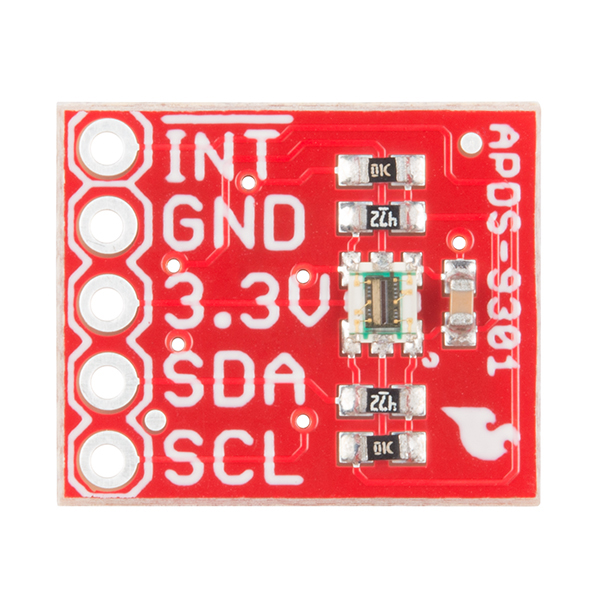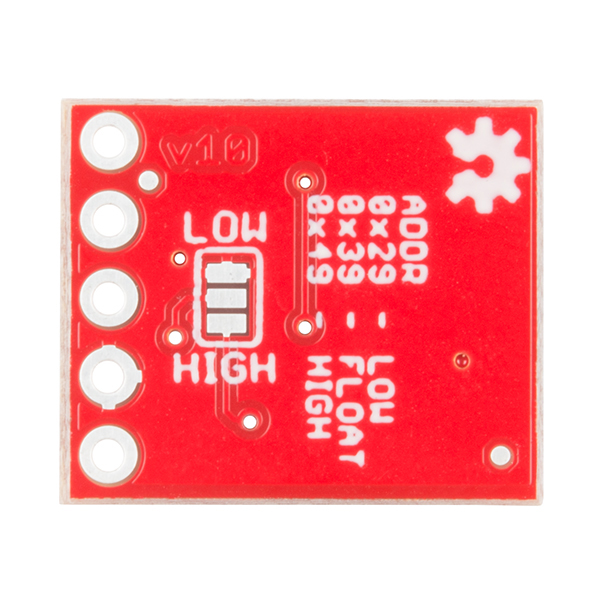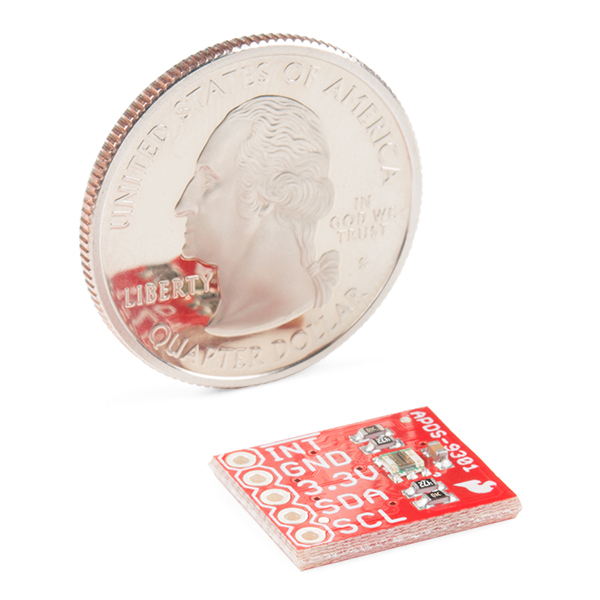SparkFun Ambient Light Sensor Breakout - APDS-9301
The APDS-9301 Ambient Light Sensor Breakout is an I2C-compatible luminosity sensor board that converts light intensity to a digital output signal. This breakout is fairly simple and has been specifically designed with only a few ancillary passive components in addition to the APDS-9301 IC itself. All readings are returned to your chosen microprocessor in lux, providing precise Illuminance measurement under diverse lighting conditions.
On top of each board breaking out our standard I2C pin-out of SCL, SDA, 3.3V and GND, we've also provided an INT pin so the APDS-9301 can be programmed to generate an interrupt under certain conditions. It is important to note that this breakout is non-instantaneous, so it will require some integration time to take a measurement.
- Typical Operating Voltage: 3.0V
- Maximum Operating Voltage: 3.6V
- 16-Bit Digital Output with I2C Fast-Mode at 400kHz
- Programmable Analog Gain and Integration Time
- 50/60-Hz Lighting Ripple Rejection
- Programmable Interrupt Pin and Function
- I2C Pull-up Resistors
- Schematic
- Eagle Files
- Hookup Guide
- Datasheet (APDS-9301)
- GitHub
SparkFun Ambient Light Sensor Breakout - APDS-9301 Product Help and Resources
APDS-9301 Sensor Hookup Guide
September 14, 2017
The APDS-9301 sensor is an I2C connected luminosity sensor which returns measurements in lux.
Python GUI Guide: Introduction to Tkinter
August 13, 2018
Tkinter is the standard graphical user interface package that comes with Python. This tutorial will show you how to create basic windowed applications as well as complete full-screen dashboard examples complete with live graph updates from matplotlib.
Core Skill: Soldering
This skill defines how difficult the soldering is on a particular product. It might be a couple simple solder joints, or require special reflow tools.
Skill Level: Noob - Some basic soldering is required, but it is limited to a just a few pins, basic through-hole soldering, and couple (if any) polarized components. A basic soldering iron is all you should need.
See all skill levels
Core Skill: Programming
If a board needs code or communicates somehow, you're going to need to know how to program or interface with it. The programming skill is all about communication and code.
Skill Level: Competent - The toolchain for programming is a bit more complex and will examples may not be explicitly provided for you. You will be required to have a fundamental knowledge of programming and be required to provide your own code. You may need to modify existing libraries or code to work with your specific hardware. Sensor and hardware interfaces will be SPI or I2C.
See all skill levels
Core Skill: Electrical Prototyping
If it requires power, you need to know how much, what all the pins do, and how to hook it up. You may need to reference datasheets, schematics, and know the ins and outs of electronics.
Skill Level: Rookie - You may be required to know a bit more about the component, such as orientation, or how to hook it up, in addition to power requirements. You will need to understand polarized components.
See all skill levels
Comments
Looking for answers to technical questions?
We welcome your comments and suggestions below. However, if you are looking for solutions to technical questions please see our Technical Assistance page.
Customer Reviews
No reviews yet.





The description has a spelling mistake "ADPS-9301" should be "APDS-9301"
Thanks for the catch!
What is the range of this sensor in LUX values (you know, like for TSL2591)? It helps the photographers to post this kind of information... Thank you!
I believe the top end of the range is 200k. It's not straightforward to calculate, though: counts per lux varies depending on the light source, and integration time plays a role as well. 200k is the best number I've found.